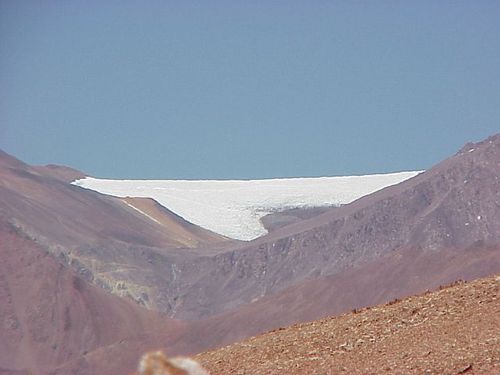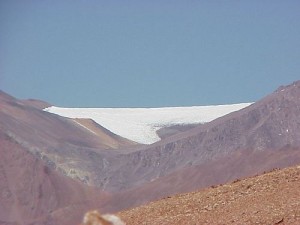Esta entrada también está disponible en: Spanish
SIDE EVENT: RIO + 20 Glaciers and Sustainability in the Anthropocene
More information about this event
19 Jun 2012, 11:30 – 13:00;
T-5 (capacity 60)(RioCentro, Rio de Janeiro, Brazil)
The Earth Summit (Rio + 20) will discuss for the first time ever, public and corporate policies and programs that are essential to protect the world’s glaciers!
- Did you know that some glaciers are invisible?
- Did you know that glaciers can cause a tsunami?
- Did you know that a relatively small glacier area can provide water to millions of people?
- Did you know that until recently, there’s never been a law to specifically protect glaciers?
- Did you know that glaciers hold hundreds or thousands of years of climate information?
- Did you know that dust, pollen, and exhaust fumes can cause glacier melt?
- Did you know that glaciers have dark lines marking their age, like concentric tree rings?
- Did you know that melting glaciers increase global temperature?
- Did you know that there are over 50,000 glaciers in the Andes mountains alone?
- Did you know that you can take measures to create glaciers or increase their volume?
Come join us for a fascinating exchange on public policy, corporate due diligence, legal frameworks and projects underway aimed at the protection the world’s melting glaciers.
AGENDA:
Glaciers and Sustainability in the Anthropocene
Date & Time Slot: 19 Jun 2012, 11:30 – 13:00
Venue: T-5 (capacity 60) (RioCentro, Rio de Janeiro, Brazil)
Contact: Jorge Daniel Taillant; [email protected]; tel (+54) 9 351 507 8376
Discussion Language: Spanish/English
Please SEND publications and requests to present to: [email protected]
Description of Workshop:
One of the global impacts of climate change as recognized widely is the acceleration of glacier melt around the world, particularly in the Himalayas and the Andes regions. Anthropogenic activity, tied to global trends to increase productive output, particularly from the extractive sector as well as heavy traffic in mountain areas, is further impacting our glacier resources, which are critical both as regulators of water basins as well as for long term water storage, particularly during especially hot and dry years. Glaciers and glaciosystems play a fundamental role in maintaining ecosystems services. Curiously, until very recently NO laws existed anywhere to protect glacier resources. This is changing.
This workshop will review the risks posed today to our world’s glaciers, and look specifically at work underway in the Latin America region to protect environmentally vulnerable glacier resources, seeking a balanced approach to economic activities such as mining and other large infrastructure occurring in high mountain areas. Some areas to be covered include legislation development to protect glaciers, public policy needs and opportunities relevant to glacier protection and existing industrial activity (including mining), an international protocol under development for Mining in Glacier Territory, the need to educate communities about glaciers, rock glaciers and permafrost and the role cryogenic (ice) resources play in our ecosystems.
Agenda
11:30 – 11:45 Introduction – Workshop Objectives
11:45 – 12:00 Jorge Daniel Taillant. (Director, CEDHA)
Democratizing Glaciers: A View Towards Sustainable Public Policy and Community Engagement on Glacier Protection
12:00 – 12:15 Cedomir Marangunic. (Director, Geoestudios)
Glaciares: Cuidados y Proyectos de Desarrollo
12:15 – 12:30 Benjamin Morales Arnao – (Museo de las Montañas Andinas, Perú)
Glacier Risks: Prevention Proposals
12:30 – 12:40 Kalia Moldogazieva – (Human Development Center, Kyrgyz Republic)
Mining and Glaciers: Impacts and Solutions
12:40 – 13:00 Discussion
Target audience:
Organizations and individuals working on water conservation and related public policy, particularly working in or on high mountain areas, policy makers focused on water protection, mining regulations, etc. Concerned actors on mining impacts in high mountain areas.
Host Organization:
Center for Human Rights and Environment, based in Argentina and working on Democratizing Glaciers, mapping glaciers and anthropogenic activity impacting or placing glaciers and other cryogenic forms at risk, developing policy guidance documents, reports about mining impacts to glaciers, and educational materials about the role of glaciers and permafrost zones. CEDHA is currently working on an International Protocol for Mining Activity in Glacier Areas.
Presenters:
Cedomir Marangunic Damianovic (1937) es chileno y croata, geólogo de profesión (Universidad de Chile, 1964) y Doctor of Philosophy (Ph.D) en Glaciología del Departamento de Geología de la Ohio State University, U.S.A., (1968). Ha realizado diversos postgrados, cursos y estudios, en Chile y el exterior, y ha sido profesor y director del Departamento de Geología de la Universidad de Chile, entre sus principales actividades académicas. Desde 1981 se desempeña como geólogo consultor, socio y representante legal de la empresa Geoestudios, la que cuenta con más de 28 años de experiencia en el mercado, siendo la primera empresa en Chile que se ocupa de proyectos, estudios e investigaciones en materia de glaciares, nieve y avalanchas.
Benjamín Morales Arnao, of Peruvian nationality, is Executive Director of thePatronato del Museo de las Montañas Andinas. A Geologist by profession, with a Post Graduate degree in Glaciology and Geological Risks in Switzerland, as well as in Alaska, New Zealand and Chule. Benjamin created the Glaciology Program in Perú in 1966, initiating the systematic study of glaciers as well as the implementation of research including risk studies and works in glacier lakes. Benjamin contributed to the creation of the Geology and Mining Institute and of the Geology, Mining and Metals Institute. He serves as Director of both institutes. He organized and directed the first and second international course on glaciology in 2000 and 2002 in the Cordillera Blanca. Throughout his career, Benjamin has held posts in the public and private sector.
Kalia Moldogazieva, PH.D is founder and director of Human Development Center “Tree of Life”. Kalia has studied the long-term adaptation of new-comers to mountain altitudes, she has worked at the National Academy of Sciences of the Kyrgyz Republic and participated in mountain expeditions investigating the impact of natural and man-made factors of environment to health and to the work capacity of miners, indigenous peoples, and other stakeholder groups. She was awarded the laureate of State Premium of Kyrgyzstan, in 1998 for a collaborative scientific work on human activity in extreme environments. Her research work includes the study of radioactive impacts in Kyrgyzstan including to birth rates, mortality and age-gender pyramids in affected area, as well as short-term and long-term consequences of cyanide contamination. She served as deputy chair of the interagency State commission on the Evaluation of Compliance with Environmental and Industrial Safety Standards at Kumtor Gold Mine (2011), for which she conducted a study into the impacts to glaciers at the mine. She has also coordinated the NGO Consortium and engaged communities on the EITI in the Kyrgyz Republic. She is the author of several textbooks, manuals, monographs and articles on the environmental, transparency issues, radioactive tailings, and sustainable development.
Jorge Daniel Taillant is Founder and Executive Director of the Center for Human Rights and Environment. He leads CEDHA’s Democratizing Glaciers Initiative, promoting greater social awareness of the role glaciers play in delicate mountain ecosystems. CEDHA works to introduce and promote more effective legislation to achieve glacier protection and is presently helping ensure a proper implementation of the worlds first national glacier protection act. Under this initiative CEDHA is carrying out several glacier inventories as well as analytical assessments of mining impacts to glaciers and other mountain ice forms. One of CEDHA’s current projects is the development of a Protocol for Mining Operations in Glacier Territory.



Comments are closed.